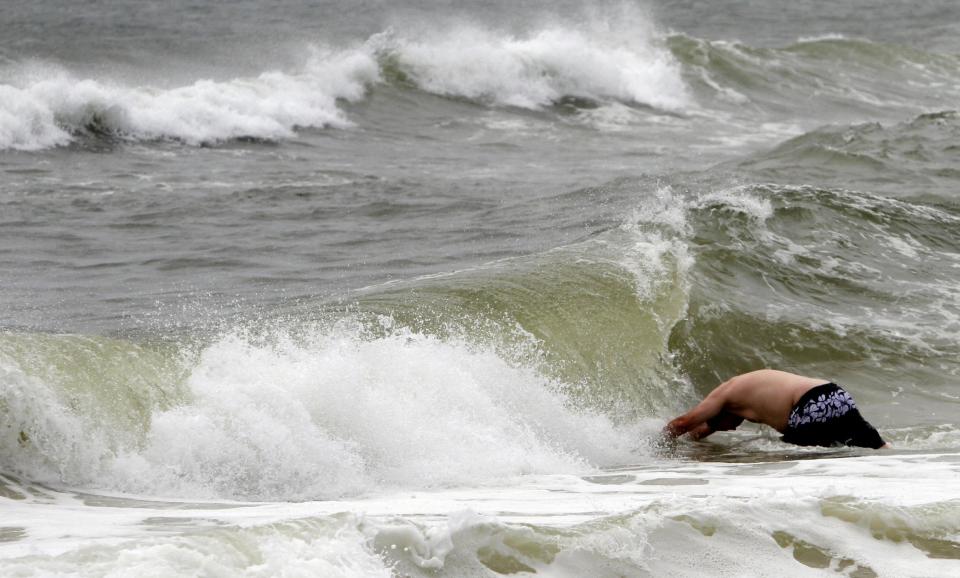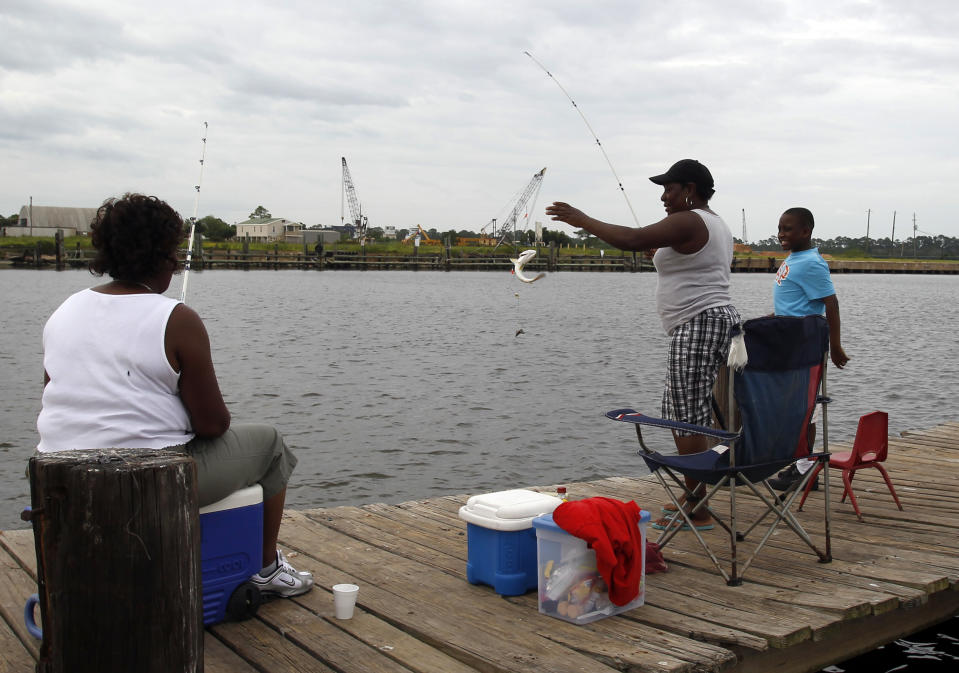Gulf oil spill defenses facing a test with Isaac
DAUPHIN ISLAND, Ala. (AP) — Sand dunes and a rock barrier built to help contain the 2010 Gulf oil spill are being watched for their effectiveness in shielding this fragile coastline from Isaac.
Authorities are hoping such barriers originally constructed after the enormous oil spill disaster can serve new duty in the name of broader coastal restoration.
On Dauphin Island, Alabama's largest barrier island in the Gulf, officials used money from the oil giant BP PLC to build miles of such dunes and a rock wall. Elsewhere, Louisiana officials, who have fought for decades against the erosion of coastal and wetland areas, have spent more than $200 million on sand berms off their state's coast.
Hurricane Katrina opened a 1.5-mile-wide gap on an undeveloped section of Dauphin Island in 2005, allowing the Gulf waters to wash into the eastern end of the Mississippi Sound.
Alabama took $16 million from BP to build a rock wall closing the gap. The town of Dauphin Island, meanwhile, used $2.5 million to build a set of parallel-running artificial dunes on its narrow western spit dotted with beach houses.
Both the rock wall and the artificial dunes were justified in 2010 as ways to keep oil from crossing into the ecologically sensitive sound. The explosion of the Deepwater Horizon rig that year killed 11 people and caused about 200 million gallons of oil to spew from BP's well in the Gulf — prompting a huge recovery and cleanup effort all along the coast. BP has poured millions into the restoration.
"What we did, it was really targeted at the oil spill itself," Dauphin Island Mayor Jeff Collier said.
The dunes have slowed the erosion and northward migration of Dauphin Island. Closing the cut in the island also reduced the salinity in the Mississippi Sound, giving Alabama a chance to rebuild its small and struggling oyster industry.
The town of 1,200 has struggled for years with a disappearing beach, and preserving the eroding shoreline is a leading concern.
For Dauphin Island, tourism is a lifeblood of the economy, revolving around the rental homes on the fragile west end. Thus, hurricanes and tropical storms are watched anxiously whenever they approach.
The dune line built closest to the water here has since largely washed away, said Scott Douglass, a coastal engineering professor at the University of South Alabama who consulted on the sand structures. He said it served its purpose, though, keeping oil at the surf line after the spill.
The second set of dunes parallels Bienville Boulevard, the town's main thoroughfare, for more than three miles, said Public Works Superintendent Corey Moore.
Openings are cut for driveways, and at one time town officials intended to plug them before a big storm. Collier, though, said officials shelved that plan, in part because they were worried about cutting off access for property owners and evacuating vacationers.
Still, Douglass and Collier said the 10-foot-high dunes should help prevent any storm surge from Isaac from washing over the island — as long as the water doesn't rise too high. As of Tuesday morning, the storm surge in Alabama was forecast to reach 4 to 8 feet.
"There's no doubt that they will help," Douglass said. "The question is whether it will get overwhelmed by the magnitude of the storm."
Power, water and sewer lines could be protected by the dune, speeding recovery, officials have noted.
Much of the sand, though, was dug out of lots on the north side of the island near houses, leaving pits. The rock wall, with 260,000 tons of stone, is so strong that storm waves probing for a weak spot could yet push through the narrow stretch into the Mississippi Sound, cutting part off part of the populated area.
"If we get a direct hit of a major hurricane, the island could break in two at those holes," Douglass said. But he said he expected a storm would have to be stronger than Isaac to break through.
In Louisiana, BP spent $260 million to build emergency sand berms on the east and west sides of the mouth of the Mississippi River. The oil company has now agreed to spend another $100 million rebuild two coastal islands in the Chandeleur chain, southeast of New Orleans.
The berms were once derided as a waste of money, with a national commission concluding they were not an "effective spill response measure." Louisiana Gov. Bobby Jindal has defended them as "one of the most effective protection measures" against the oil.
Ray Melick, a BP PLC spokesman, said the company made no value judgments on the Alabama and Louisiana projects.
"We feel like the local governments knew what they needed best at the time," Melick said.
Studies suggest such barriers hold out promise in thwarting erosion.
For example, one study has found that sand from berms built in the Chandeleurs has incorporated itself into the islands, said John Lopez, executive director of the Lake Pontchartrain Basin Foundation.
"It probably does add a little bit of life to the island," he said.
The islands provide critical habitat for birds and protect lagoons on the coast side that are important fish nurseries, Lopez said.
But no one's quite sure how the barriers will hold up to Isaac. And experts are also unsure how much new tar and oil from the Gulf spill will be stirred up by Isaac.
"I think that's one of the great mysteries," said William "Monty" Graham, an oceanography professor at the University of Southern Mississippi. "What's still out there and what's buried and what will happen?"
Graham said he expected more tar balls on beaches, but wasn't sure much else will wash up.
___
Follow Jeff Amy on Twitter at http://twitter.com/jeffamy




